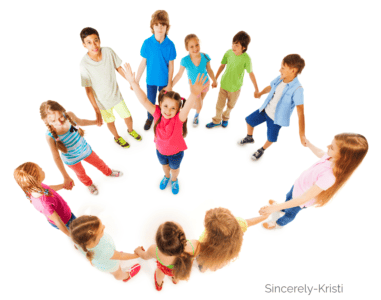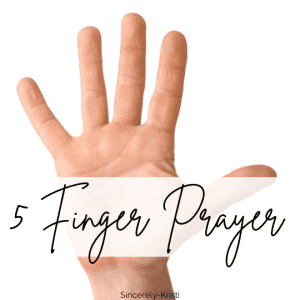Self Confidence Activities for Youth

Below you will find a list of the best self-esteem activities for building confidence for youth. These ideas are some of the best ways to help reduce negative thoughts and increase positive thinking.
{This post may contain affiliate links. This means that if you place an order using an affiliate link, I may earn a small amount of compensation at no cost to you.}
What is confidence and why does it matter for our youth?
According to Nemours Teen Health, Confidence helps us feel ready for life’s experiences. When we’re confident, we’re more likely to move forward with people and opportunities – not back away from them. And if things don’t work out at first, confidence helps us try again.
Self-Esteem vs Self-Confidence
The Attention Deficit Disorder Association differentiates self-esteem and self-confidence in the following ways:
Self-esteem is how you see yourself on the inside, and is invisible to the outside world. When people think they see self-esteem in another, they are actually seeing self-confidence.
Self-confidence is how you project yourself to other people. You can develop your confidence further through practice and accomplishments others see. Confidence is something you feel inside as well as something other people notice in you.
Below you will find a variety of confidence building activities to help increase your child’s self-esteem. As they develop healthy self-esteem, they will also increase their self-confidence and they (and others) will begin to see themselves as a more positive person.
Self Confidence Building Activities for Youth
Growth Mindset
People with a growth mindset believe that they can continually improve their abilities and success through practice and effort. They see mistakes as opportunities to learn and grow instead of as failures. They are more likely to have a positive outlook and are willing to persevere, even in difficult situations. When things get hard, they don’t give up easily and are determined to continue trying. Having a growth mindset is something that develops over time.
In contrast, people with a fixed mindset view their intelligence and abilities as innate and unchanging. A fixed mindset is a more black and white way of viewing things. For example, people with a fixed mindset are more likely to categorize themselves as smart or dumb, a success or a failure, rather than on a growth path towards improvement. Those with a fixed mindset tend to believe if they don’t already have the intelligence or abilities to complete a task that there is no chance of improvement.
You can see just from reading a bit about the differences that working on developing a growth mindset is a much more hopeful and positive way to view the world and our ability to thrive in it.
Activities to help encourage a growth mindset:
- 52 Essential Conversations – Social Emotional Learning Activities & Cards for Kids, Family, Teacher & Counselor – Build Growth Mindset
Want to build your own self-confidence? Check out these 7 Ted Talks!
Positive Self-Talk
Self-talk is the voice that goes on inside of our heads. Engaging in more positive self-talk can help reduce stress, improve self-esteem, increase motivation, inspire productivity, and improve overall mental and physical health. Positive self-talk can help kids to see themselves in a more optimistic way and is pivotal in developing a positive mindset.
Here are some examples of Positive Affirmations that can replace negative self-talk and help your child remember that they are a good person:
- I allow myself to make mistakes.
- I can do hard things.
- My challenges help me grow.
- I’m choosing to have an amazing day.
- I do not give up.
- I am a problem solver.
- I am important.
- I’m worthy of being loved.
- I’ll talk to myself like a friend.
- My voice matters.
Positive Self-Talk Activities:
Age Appropriate Chores
Assigning your child age-appropriate chores can give them a sense of purpose and provides an opportunity for them to experience success. This can be especially impactful for children struggling in other areas.
By giving your child age-appropriate chores, you not only give them the opportunity to help family members, but this can also help build self-esteem and independence.
Additionally, doing chores promotes organization and building community within the family. Completing chores has the potential to boost a child’s confidence while teaching them important life and daily skills.
Top Chore Charts
- Magnetic Rewards Chore Chart (for use from toddler-teen)
- Customizable Chore Chart for Kids or Adults with Sliders
- Reward Chart Pad with Stickers (26 charts and 2800 stickers included)
Gratitude
Feelings of gratitude increase feelings of self confidence.
Studies show that expressing gratitude can have benefits such as supporting physical and mental well-being, boosting self-confidence, and enhancing sleep quality; all of which contribute to happier, healthier children.
Here are five simple ways to help your child increase gratitude:
- Adults model expressing gratitude aloud
- Have your children help with donating clothes or toys to charity
- Gratitude Jar – write down something you are thankful for each day and add it to the jar
- Write thank you notes or letters
- Point out generosity in others
Acts of Kindness
When I was working as a substitute teacher, one of the districts really emphasized being a “bucket filler.” The idea of being a bucket filler instead of a bucket dipper centers around acts and words of kindness. It is a fun and effective way to have children think about whether their actions are having a positive or negative impact on others.
Some example of being a bucket filler:
- Taking turns
- Inviting others to play
- Using manners
- Smiling
- Sticking up for a classmate who is being bullied
Examples of being a bucket dipper:
- Interrupting
- Not sharing
- Using mean words
- Doesn’t clean up messes
- Hurts people
Another fun way to engage in intentional acts of kindness with your kids is with a Kindness Advent Calendar. Advent calendars are usually used around the holidays, but one that focuses on acts of kindness could be used at anytime. Instead of opening small presents leading up to Christmas, an acts of kindness advent calendar gives suggestions on kind actions and acts of services that focus on giving to others rather than receiving.
Goal Setting
Setting specific goals, whether large or small, and achieving them, helps children to feel accomplished. Over time, this helps contribute to an increase in self-esteem. You can help your child get the benefits of goal setting by helping them to set attainable goals. You can do this by helping them set SMART goals. What are SMART goals?
SMART Goals
Setting SMART goals helps to ensure that your child’s objectives are attainable within a certain time frame. When setting goals, use these five components to help determine if a specific goal is achievable and measurable.
S- Specific
What task needs to be accomplished?
M- Measurable
How will you know when the goal has been met?
Examples: What specific time do you want to run the 50 m dash in? How many bags do you want to make for the homeless?
A- Achievable
Is your objective something that your child can reasonably accomplish? Goals can be something to stretch for, but not something that likely won’t be able to be achieved.
R- Relevant
Why are you setting this goal? Is it relevant to your child’s interests or life?
T- Time-bound
What is the timeframe to achieve this goal? 2 weeks? The end of the grading period?
Example of SMART goal:
Griffin will pack 20 bags for the homeless over the next two weeks in order to have them ready to distribute when he goes to serve the homeless with his family in two weeks.
This goal is Specific (will pack bags for homeless,) Measurable (20 bags), Achievable (parents will help with obtaining items for bags), Relevant (he will be distributing bags with his family), and Time-bound (within 2 weeks.)
Role Playing
Using role-play gives children an opportunity to build up experience and self-confidence with handling the situation in real life. Role play gives children the chance to build their social skills in a non-threatening way. It can help them to learn empathy and with understanding others’ perspectives.
The biggest positive about role playing is that it gives opportunities to practice social situations before they arise.
A great tool related to role playing that can help familiarize your child with unfamiliar social situations is the use of social stories. Social stories can be read or watched (try looking some up on YouTube). You can try reading or watching one before a new event such as going to the dentist or as a reminder before a playdate.
Both role playing and using social stories are great ways to help youth develop more confidence with social skills.
Cooperative Games
Engaging in cooperative games can be a great way to improve your child’s social skills and self confidence. This can be done by playing fun games together as a family or by playing team sports.
- Check out THIS POST from Superprof for some great games and activities that you can do as a family to build your child’s self confidence.

Playing sports can also be a great way to increase confidence, because as your child’s strength and skills increase through training, they will have more confidence in their abilities because they will visually see them improve.
- Search online or in a social media group, such as your community Facebook group, for youth sports teams in your area or reach out to the school to see what types of team sports are available to your child in your area.
Creative Outlet
If sports isn’t your child’s thing and they are more of a creative type, providing opportunities to practice and explore different creative outlets is another great way for them to increase self confidence.
When children try something new and enjoy it or find success in it, they often feel better about themselves and that they have a unique talent to share.
Here are some suggestions for ways to encourage your child’s creativity:
- try musical instrument lessons, either privately or through the school
- write a song
- journaling, this often helps youth discern their own personal values
- write a poem
- try a pottery class
- learn to knit or crochet
- try painting with a variety of different types of paint and brushes or other objects
- try origami
- take a dance lesson
- create with Perler beads
Get started with these creative activities:
Focus on Progress, Not Perfection
Focus on praising your child’s hard work and resilience more than the end result. This is a great way to encourage youth to try new things. They are more likely to try something new if they know that they will be encouraged when attempting to try new activities.







